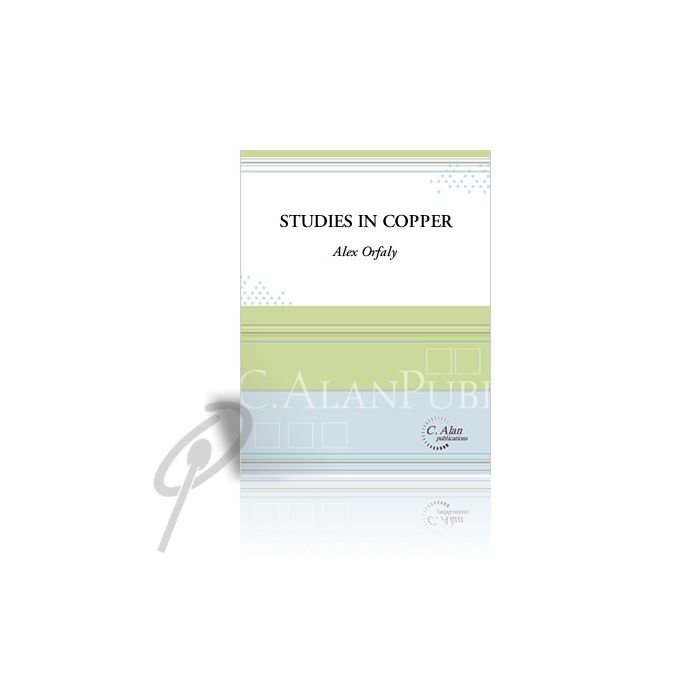Studies in Copper: each
Composer: Orfaly Alex
These etudes focus on the following five issues on the timpani: Sound Quality, Articulation (and evenness between the hands), Rolls, Intonation, Rhythm and Time.
Sound Quality: No matter the technical challenge the player should always strive for the best sound quality possible. Always paying particular attention to where each drum is being struck (the playing spot) will help in achieving this goal. There are many opinions as to what an ideal sound can be, for myself it is an open and ringing sound that is produced by using a relaxed technique.
Articulation: Clear articulation is always a concern for the timpanist. Using harder mallets should not always be the solution. In fact, the timpanist might find it more rewarding to use softer mallets, achieve a fine timpani sound, and use their touch and technique to produce the required articulation. The timpanist should pay particular attention to the evenness of sound between the hands, especially when there are repeated notes on one drum.
Rolls: Rolling is the timpanist’s equivalent of a long tone. Rolls will emphasize the ringing nature of the timpani and not the percussive qualities. In passages with slurs marked above rolls, these rolls should be as connected as possible between the drums and not broken.
Intonation: Precise intonation is very important. Hearing proper intervallic relationships is essential to the development of any timpani player. If a note is out of tune, the player should fix it (while playing) and not allow it to remain false.
Rhythm and Time: Keeping time while tuning during rests is a skill required by the timpanist. If the player needs more time in these etudes, it is acceptable to change the amount of time given. The player should then adhere to this change. Players should make sure to subdivide mentally to ensure proper rhythmic spacing and placement.
Muffling is encouraged at the discretion of the player. Sometimes articulations are marked to indicate whether they should be long or short. In any event, muffle as quietly as possible.









